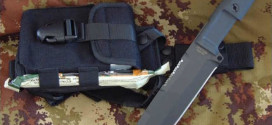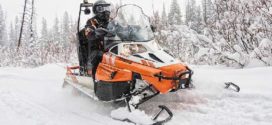When going out into nature, and even for a long time, dry food is not the best solution. And if you consider that firewood can not be found everywhere and not always, then it is quite difficult for a tourist, hunter and fisherman to do without an autonomous source of open fire. This article will introduce the reader to one of the types of burners - gas - and the features of choosing the optimal model for the reader.
Gas tourist burners according to the method of attachment to the cylinder are divided into 2 main types. In addition, there is a difference in other parameters. Each of the options has its advantages and disadvantages, therefore, when choosing a model, one should focus not on the advice of "experts", but on the specifics of its use, since going out into nature is a generalized concept. It includes not only hiking, but also fishing, hunting or otherwise.
Therefore, before you go to the store, you need to answer some questions:
- what is meant by tourism in a particular case;
- how many people are in the group;
- conditions under which the gas burner will be used;
- presence/absence of a vehicle.
Content
Selection criteria for tourist gas burners
By connecting to a gas tank - "non-remote" models
This kit does not include such a connecting element as a flexible hose. That is, the burner is fixed directly on the cylinder.
Pros:
- Product compactness.
- Increased reliability of the tourist burner. First of all, due to the minimum of connections through which gas leaks most often occur.
Minuses:
- Poor kit stability. With this method of connection, the center of gravity of the tourist burner is shifted upwards. Therefore, when handling it, not only care is needed, but also the adoption of additional measures to protect it from tipping over. For example, when placing bulky dishes with water on the burner.
Models with a horizontally attached tank
Pros:
- Light weight and compact.
- Ease of use. Such a burner can be installed almost anywhere.
- Low price. Such tourist burners are the cheapest.
Minuses:
- Small bottle capacity. Consequently, the possibilities for cooking are limited. For 1 - 2 people, such a burner is an acceptable option. But with a collective field trip, it is completely useless.
- All containers are thin-walled. If the cylinder is even partially deformed, its further connection is in question.
Another modification of the “non-remote” burner is a nozzle, which also includes dishes
In some sources, such products are referred to as "camping stoves".
A plus is the presence of a special radiator-stand for dishes and a bowler hat. At the same time, it performs the function of a flame spreader. Such a burner is more efficient than analogues, since the bottom of the installed container (kettle, pot) warms up more evenly, which means that the water boils faster. This engineering solution optimizes gas consumption and makes the operation of the tourist burner more economical.
To learn how to choose the right camping kettle - read here .
Minuses:
- Many users are dissatisfied with the large dimensions of such burners. This creates some inconvenience when carrying, especially over long distances. Therefore, those who go hiking are not recommended to purchase such models.
- Using a regular kettle or pan will not work. You will have to be content with only what is supplied in the kit.
"Autonomous" burner models
Such tourist burners are equipped with their own "supports", and the connection to the gas tank is made using a flexible hose.
Pros:
- Maximum stability. True, provided that the base (ground, flooring) is even and solid.
- Convenience of accommodation. For the burner itself, separated from the cylinder, it is easier to find an acceptable site for installation.
- The possibility of gas consumption to the maximum. Experienced tourists "choose" it almost completely, turning the container upside down. This ensures both the uniformity of the flame and the complete afterburning of the remaining gas.
Minus:
- There is a high probability of leakage of "blue" fuel.
By power
This characteristic varies between 2 - 7 kW. Unlike a number of other technical devices, the “more is better” principle does not apply to tourist burners. A model that is too powerful, on which food is cooked for a small group, in small dishes, will mainly heat the environment. There is no need to talk about the rationality of such an acquisition.
In fact, it is not power that comes to the fore here, but such an indicator as the time of boiling water in the dishes. That's it, and not W (kW), and you need to pay attention. That is, to be guided by the principle of sufficiency, and not by the numerical expression of the characteristic.
According to the ignition system
The choice for this indicator is small. There are only two options - with and without piezo ignition. In the first case, ease of use is provided. But, despite all the attractiveness of such "automated" gas burners, it should be borne in mind that they are "capricious" to a certain extent.
The element does not work when wet (in conditions of excessive dampness, in direct contact with liquids). In addition, at an altitude of 3,500 m or more, it is unlikely that such a burner will be “ignited” without ordinary matches. Therefore, for lovers of mountain tourism, it is better to refuse to purchase models with such a “service”.
By balloon type
This is one of the "pitfalls" that many stumble over. It should immediately be clarified to which containers this type of burner can be attached. Some models are designed for only one standard. This is primarily due to the peculiarities of threaded connections. And the question immediately arises - where to fill these cylinders?
By manufacturer
The author assumes no responsibility to recommend anything in particular. However, if you carefully analyze the reviews on thematic sites for tourists, fishermen and hunters, you can note those models that are praised more often. Their reliability, ease of ignition, small dimensions, weight and a number of other positive points are noted.
Based on this, it is worth paying attention to gas burners under the brands "JetBoil", "ADG", "Kovea", "MSR", "Primus" . Although they are not the only ones on the market. It remains to add that the price range is significant. The simplest and cheapest gas burner will cost a tourist 490 - 540 rubles. More expensive and "fancy" models can cost up to 10,980.
The article lists the main criteria by which it is necessary to determine the feasibility of acquiring a specific model of a tourist gas burner. Manufacturers are constantly improving something, trying to surprise and attract the buyer. But here's how much a tourist needs various "services", which, by the way, increase the final cost of products - a question that requires an individual assessment.
Useful tips for choosing a gas burner
- All camping gas burners work equally well with both propane (butane) and isobutane. What is the difference from a practical point of view? Butane / propane at low temperatures is not so effective, besides, it does not differ in strength and "purity" of combustion even under normal conditions.
- When calculating the required amount of fuel, it should be taken into account that when gas is consumed, the efficiency of the burner decreases. In addition, it is difficult to determine the remainder. Therefore, when going out into nature, it is necessary to take a small supply of "fuel" plus the one that is pre-calculated according to the product passport and the estimated time of its use.
- Even at the point of sale, the burner should be thoroughly tested. And not a single ignition, but several. This will help make sure that the "start" is easy, the flame is stable, and there are no defects in the kit itself. By the way, if the product is of low quality, not properly adjusted, then in some cases a characteristic smell of gas immediately appears.
Hello, I am Alexander, the mastermind behind the blog.
In terms of career and free time, I connected my life with the forest. How else, when you live in Karelia! In this blog, I am responsible for the hunting, hiking and equipment sections. Welcome to my world!
 Survival Lessons Tips for the survivalist, fisherman and hunter
Survival Lessons Tips for the survivalist, fisherman and hunter





